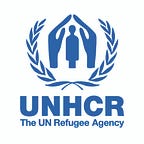Conflict and persecution displace more people than at any time in 70 years
Our statistics show that 65.6 million people — more than the entire population of the United Kingdom — were forcibly displaced at the end of 2016.
Today we released our annual survey of the state of displacement. Here’s what you need to know:
① The bad news
The number of people forced to flee is at the highest level ever recorded. At the end of 2016, some 65.6 million were people forcibly displaced. That’s 300,000 more than the previous year. Of this number, 10.3 million people were newly displaced in 2016, two-thirds within their own country.
② High levels of refugees
Today there are 22.5 million refugees worldwide. Syria remains the world’s largest producer of refugees (5.5 million). South Sudan, the world’s newest country, now ranks third, after Syria and Afghanistan.
③ Contrary to popular opinion, most refugees live outside of Europe
Around one in three refugees flee to the world’s least developed countries. The vast majority, 84 per cent, live in low- and middle-income countries.
④ Children are disproportionately affected by conflict
Half of the world’s refugees are children. By contrast only a third of the global population is children.
75,000 unaccompanied or separated children applied for asylum in 2016, but the actual number of children fleeing on their own is thought to be even higher.
⑤ And now for some good news:
Growth in global displacement has slowed down a bit. In the previous three years the increases were in the millions, not hundreds of thousands.
Half a million refugees, and 6.5 million people displaced inside their countries, returned to their areas of origin, BUT many in less than ideal circumstances.
Some 37 countries accepted 189,300 refugees for resettlement.
Find more facts about people forced to flee here.
